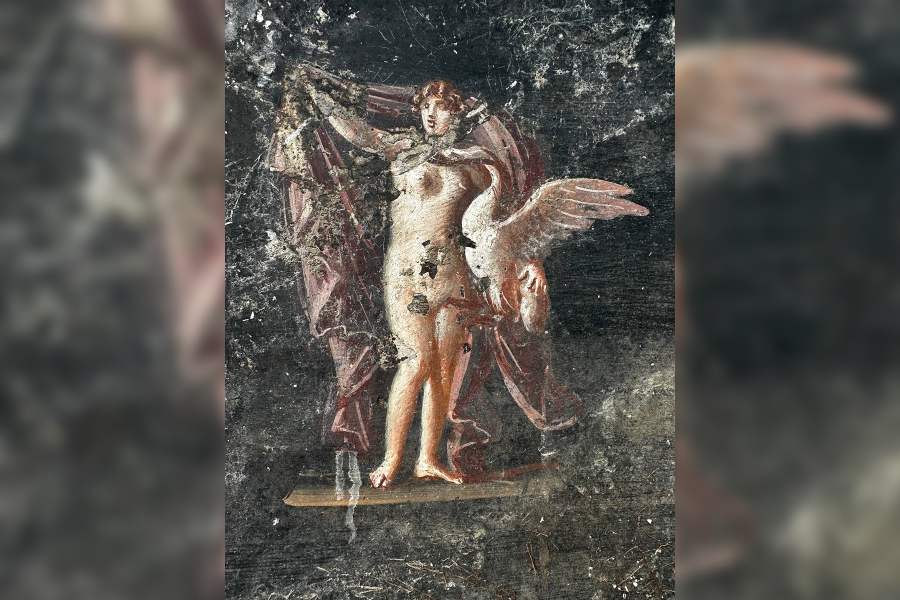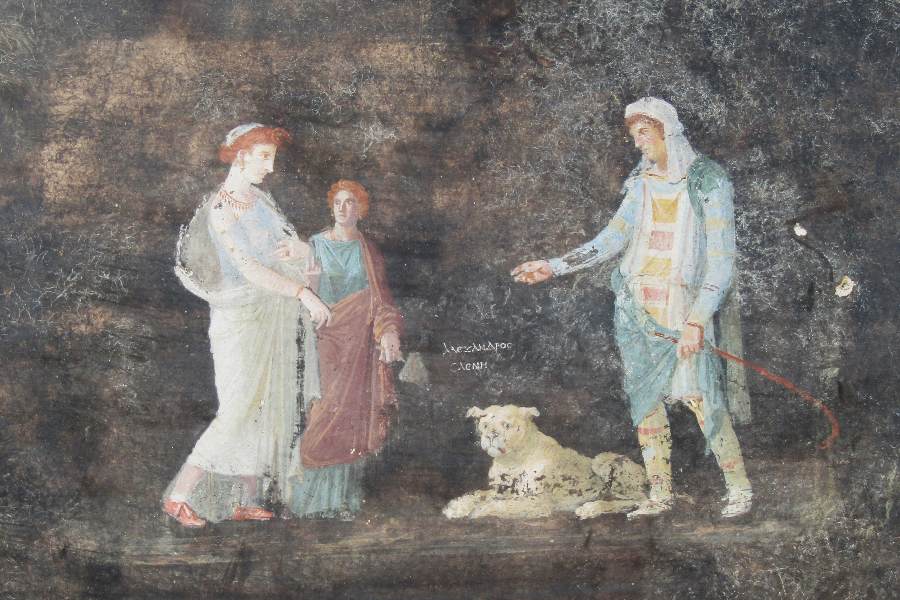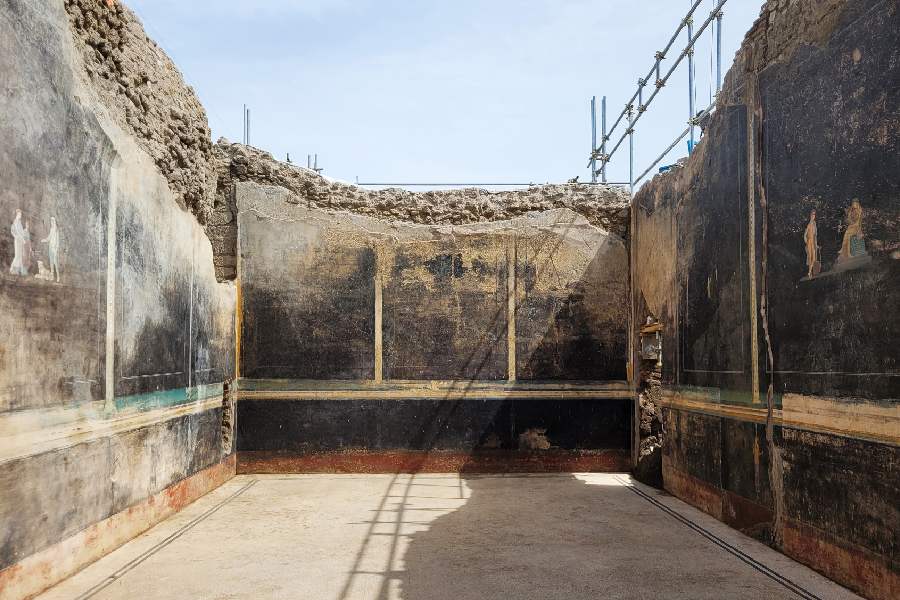Archaeologists working at the ancient site of Pompeii unveiled their latest find Thursday: a formal dining room that offers a glimpse of how some of the wealthier denizens lived, or at least the art they could meditate on as they munched.
Painted dark black so that soot from candle smoke wouldn’t stain them, experts said, the walls are divided into panels. Several of them are decorated with couples who are associated with the Trojan War.
The dining room is part of an insula, the equivalent of a city block, that has been excavated in connection with a project to shore up the perimeter between the excavated and unexcavated areas of the city, part of which remains underground. The project will help better preserve the site.

In an undated image provided by Parco Archeologico di Pompei, Leda and Zeus, depicted as a swan, discovered by archaeologists excavating Pompeii Parco Archeologico di Pompei via The New York Times
“People would meet to dine after sunset; the flickering light of the lamps had the effect of making the images appear to move, especially after a few glasses of good Campanian wine,” Gabriel Zuchtriegel, director of the archaeological park of Pompeii, said in a news release about the dining area. “The mythological couples provided ideas for conversations about the past and life, only seemingly of a merely romantic nature. In reality, they refer to the relationship between the individual and fate.”
The couples include Helen of Troy and Paris, who is identified in the scene with a Greek inscription by his other name, Alexandros, while a panel on the same wall shows Helen’s parents: Leda, queen of Sparta, and Zeus, depicted as the swan who seduced her. Across the room, facing Helen, her handmaiden and Paris — and a despondent-looking dog — is Cassandra, who could see the future, along with Apollo, who had cursed her so her prophecies would not be believed.
There is evidence that the room was part of a building that was being restored when Mount Vesuvius abruptly erupted, burying the city in pumice stones and ash in the year 79, Zuchtriegel said in a telephone interview.

In an undated image provided by Parco Archeologico di Pompei, Cassandra, discovered by archaeologists excavating Pompeii Parco Archeologico di Pompei via The New York Times
“It seems like the entire insula was being reconstructed at the moment of the eruption,” he said. Zuchtriegel said the reconstruction might have been the result of an earthquake that had shaken the city “a few months” before Vesuvius blew.
In another recently excavated chamber adjacent to the dining room, archaeologists found stacked roof tiles, work tools, bricks and lime, discoveries that offered insight into ancient building techniques and the use of concrete.
During the past year, various areas of the insula have been unearthed, offering fresh understanding about how the ancient residents lived. For example, one room linked to a bakery suggests that some enslaved people lived alongside donkeys in a dark room where the only window was covered in bars. A fresco in another chamber seems to show that locals liked pizza, or at least a prototype of sorts. Electoral inscriptions in the bakery hint that buying votes was not unheard of.

In an undated image provided by Parco Archeologico di Pompei, from left, Helen of Troy, a handmaiden and Paris, along with a despondent-looking dog Parco Archeologico di Pompei via The New York Times
The dining room frescoes are painted in the so-called Third Style, popular in Pompeii from about 15 B.C. to mid-first century, Zuchtriegel said, and there is evidence that they had been retouched and restored in ancient times.
“The colors are a little different; you can tell the difference,” he said.
The dining room is currently closed to the public because more excavations are underway.
“We don’t know what’s there — that’s the great part,” Zuchtriegel said.
The New York Times News Service











